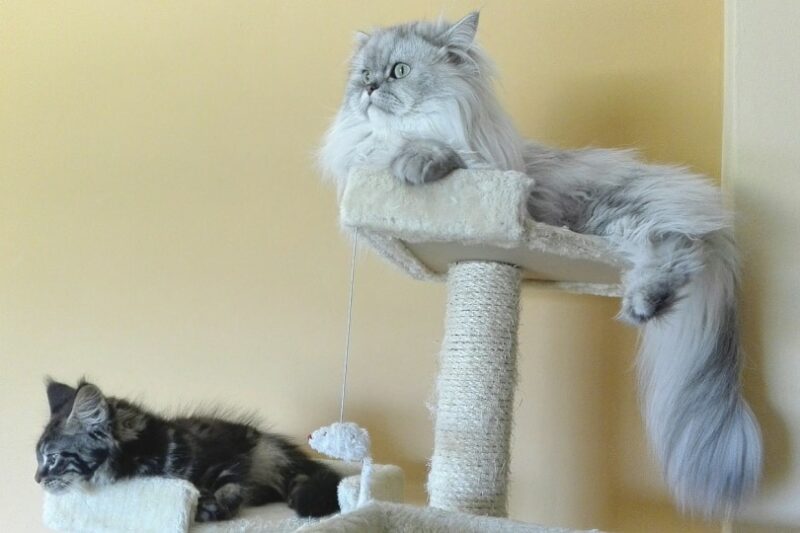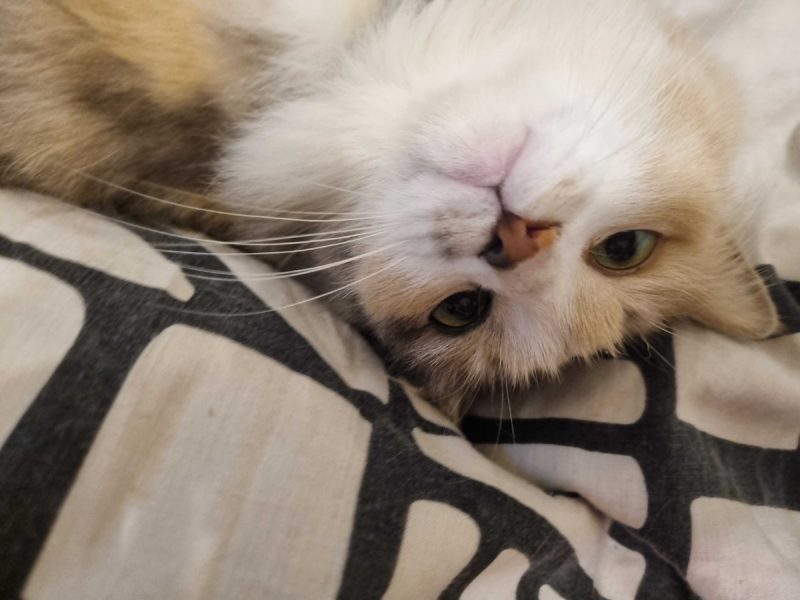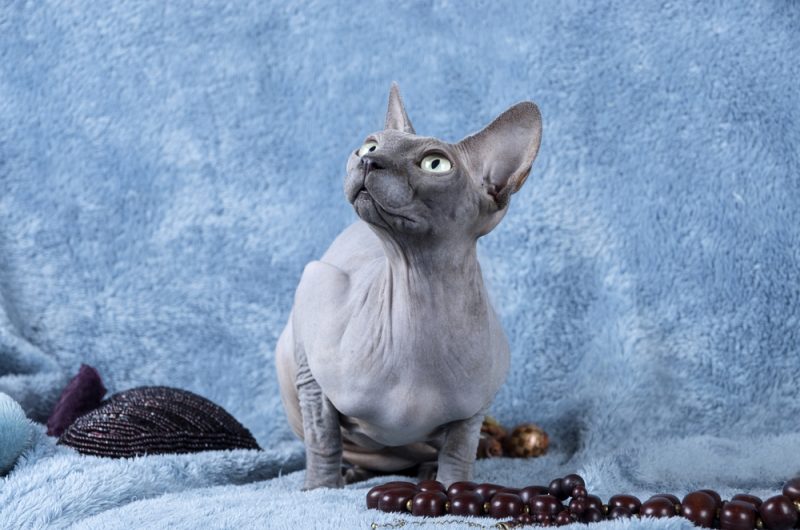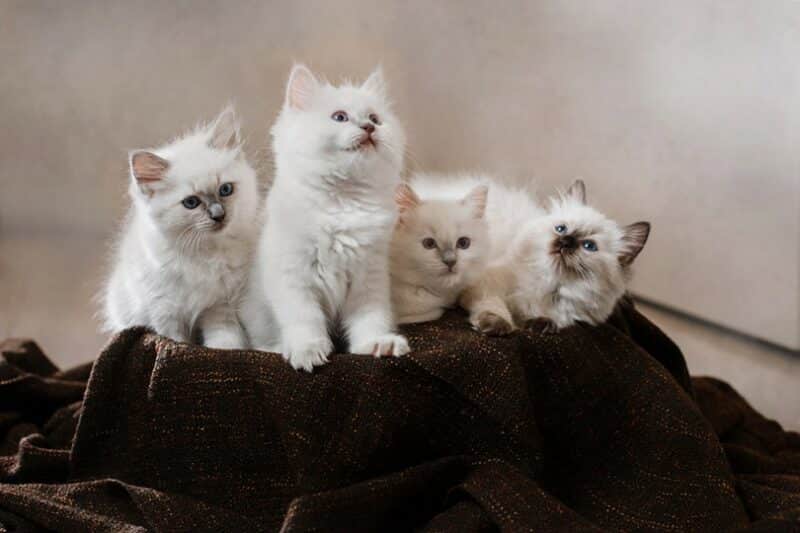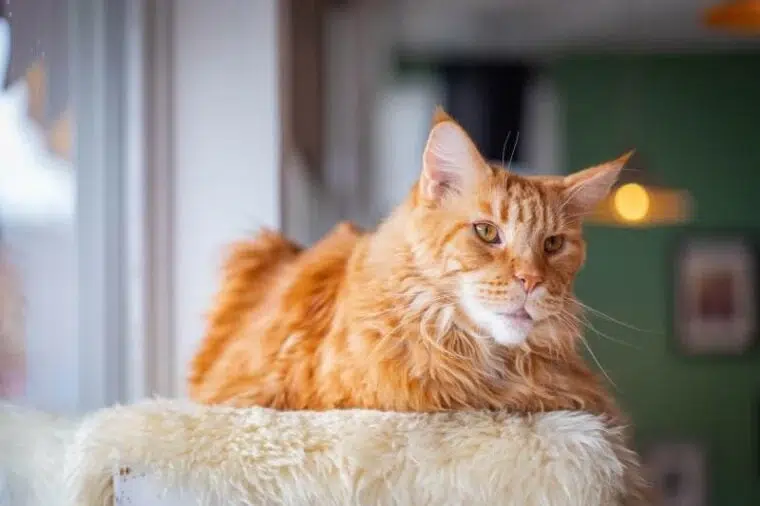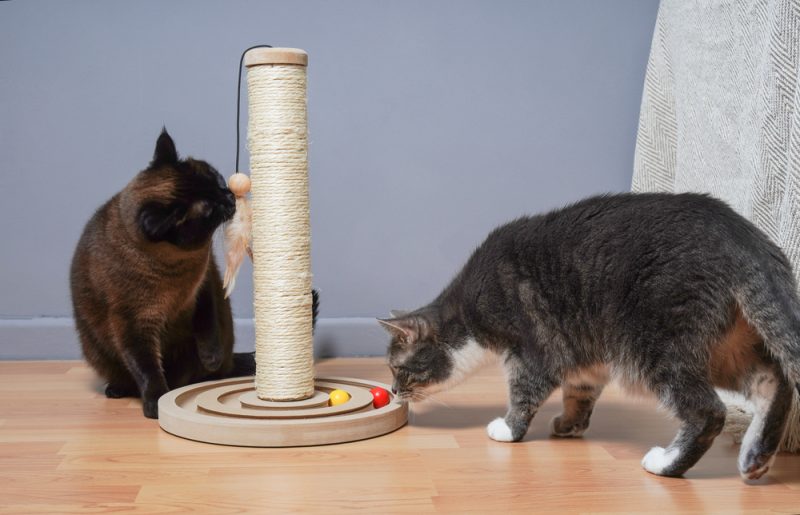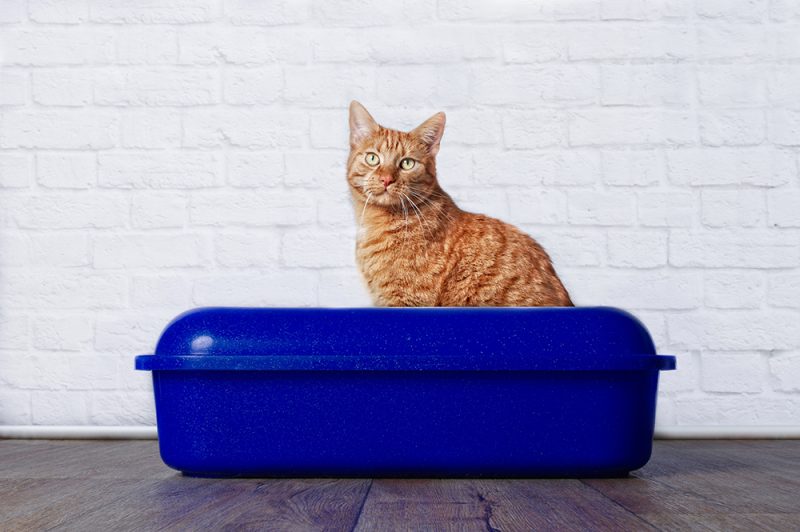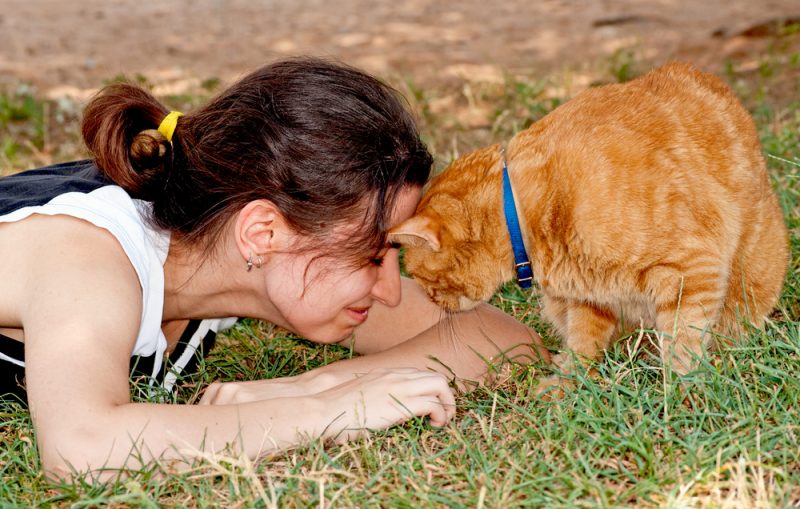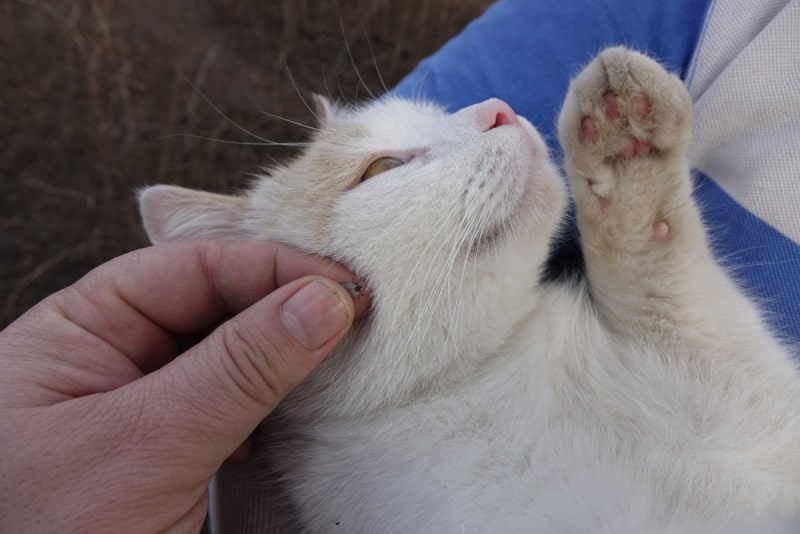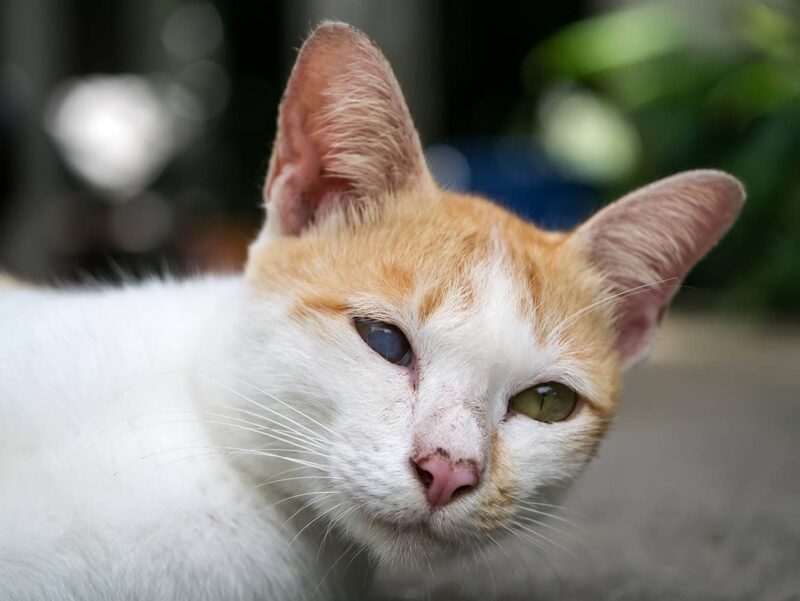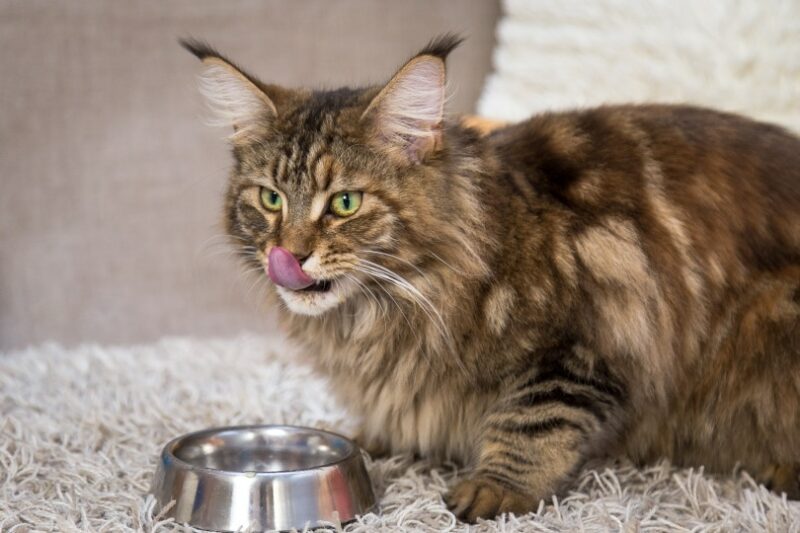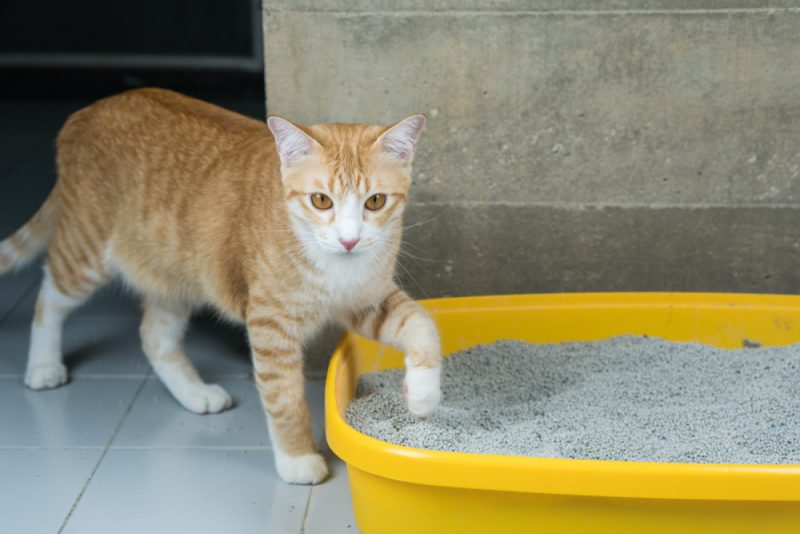Your cat’s claws are used for survival as hunting weapons and tree-scaling devices in the wild. As domesticated pets, their claws are kept in tip-top shape with regular scratching, which also serves as a way to do a full body stretch. Of course, to save our furniture, we have designated cat scratchers that they quickly take to. So, it can be jarring when they stretch their paws up to our legs, only to drag their claws down our calves, or sit on our knees to claw at our lap.
Why would cats use our legs as a scratching post? There are plenty of reasons for the contact between your cat’s claws and your legs, and none are sinister!

The 5 Possible Reasons Why Your Cat Uses You As a Scratching Post
1. They Want Attention
As quadrupeds (four-legged animals), cats are tactile with their front paws. They use them to investigate strange objects, reach for items, and play with them. If their meows aren’t enough to attract their owner’s attention, they may use their front paws to get attention.
Reaching up and placing their paws on your legs could signify they want you to talk to them, pet them, or play with them. Either way, they’re just looking for love and attention. Unfortunately, they don’t always have much control over their claws. This is true if they use your leg to stretch out on, as the stretching can cause the nails to pop out involuntarily.
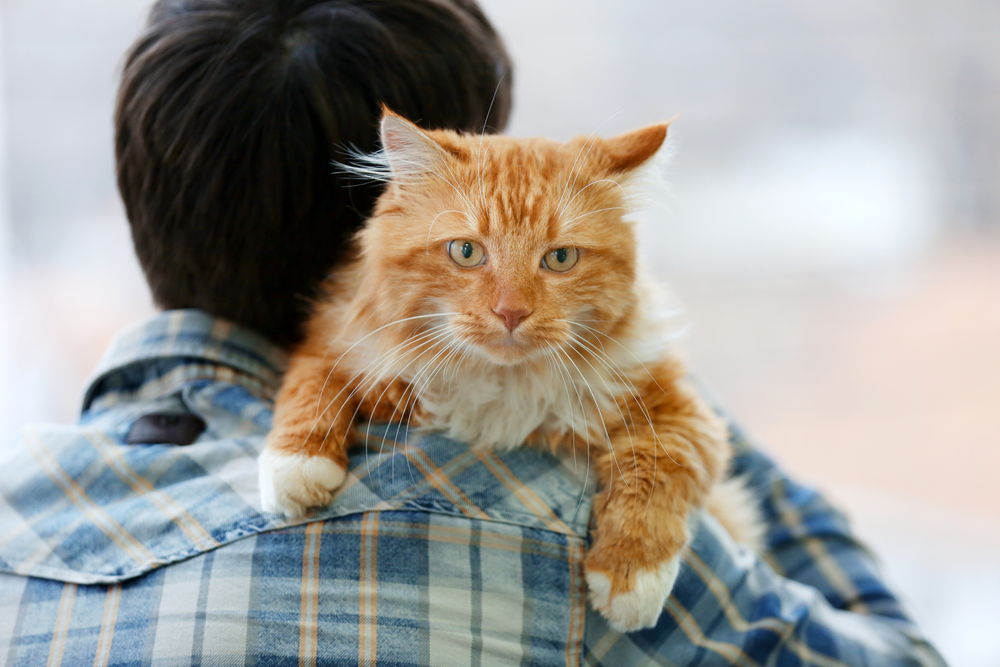
- Keep your cat’s claws trimmed
- Give them lots of undivided attention, especially when you first return home
- Respond to their meows
- Provide plenty of exercise through playing, as well as mental stimulation through environmental enrichment
- Redirect their scratching with toys
- Place them next to a scratch post
2. They’re Hungry
Your cat may be not looking for social attention but asking you for something in particular. For example, when your cat wants you to open a door for them to go through, they often stretch up and scratch at the door to communicate this, while meowing and following you around intently.
If you are near their feeding area or their bowl and they scratch at your leg, they may be asking for you to feed them.
- Use an automatic feeder. Your cat may stop associating their food with you, so they won’t look to beg you for it as much.
- Feed small and frequent meals. This method will keep your cat moderately satisfied to prevent a time (like right before dinner) when they are extra hungry.
- Only feed your cat in their bowl. If you start feeding your cat at your dinner table or from the hand, they will begin to learn food is available from you anytime and do their best to beg for it.
- Get them checked out by the vet. Some medical issues can cause excessive hunger, causing cats to beg for food even if it is out of character.
3. To Get Comfy
A behavior you may be familiar with in dogs is also typical in cats: using their paws to prepare a spot to sleep in. Pawing and kneading at surfaces can be a way for cats to soften a surface before they lay down. If your cat likes to sit on your lap, your legs may get battered by their claws as they prepare to snuggle in!
This behavior comes from wild denning behaviors where cats prepare a spot to rest in for protection from the elements. This may also be a form of nesting for pregnant or nursing cats, as they look for a safe and warm space to keep their kittens.
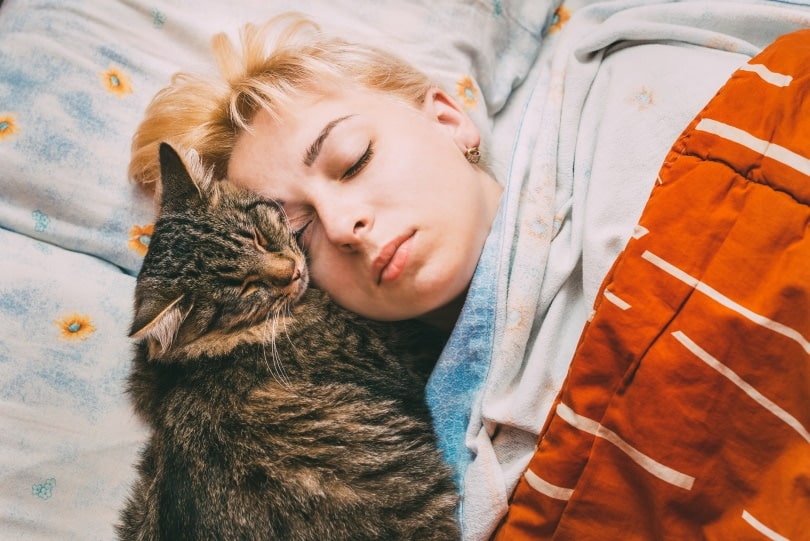
- Keep a blanket near your lounge area to place on your lap before your cat sits down. This creates a barrier between your legs and their claws so they can get cozy without causing you pain.
- Provide plenty of beds and blankets around the home for your cat to find comfort and warmth.
- Keep your cat’s claws trimmed.
4. They Love You!
Besides using their claws and paws to get comfortable, kneading their feet on your lap can signify your cat adores you. What better way to say “I love you” than by digging their claws into your lap?
Kneading behavior stems back to when your cat was a kitten. During nursing, kittens use it to stimulate the mammary glands for milk production. Of course, your cat knows that no milk will come from your legs, but it is a retained behavior.
Your cat may be trying to tell you that they know you are their “human mom,” and they love you very much. You’ll know it is the reason behind the clawing if they are also snuggling up to you, purring, or even drooling pleasure.
- Put your hands over their paws gently to stop them from kneading until they settle into rest.
- Keep a blanket nearby as a barrier between your lap and their claws.
- Redirect their scratching with toys
- Keep your cat’s claws trimmed.
Trimming your cat's nails at home can be hard, but having a professional do it can be expensive. With the help of great tools like Hepper's Cat Nail Clipper Set, you can easily and quickly trim your cat's nails at home. This set includes two pairs of stainless steel clippers with safety guards and locking mechanisms, plus a built-in nail file and a convenient pouch.
5. To Mark Their Territory
Part of a cat’s scratching comes from instincts. They use the scent glands located on their paws (interdigital glands) to mark their territory. Scratching can leave behind visual and chemical messages to other cats in the area.
Your cat may mark their territory on your legs to leave their scent behind. This familiar scent can provide comfort and security to your cat.
- Redirect their behavior away from you, using a toy.
- Don’t punish them for scratching. You could damage your relationship and create fear, as well as unknowingly reinforce the behavior as even negative attention is attention in your cat’s eyes
- Place them next to a cat scratcher and use catnip to entice them to use it
- Consult a veterinarian if anything mentioned above wouldn’t work
If you need to speak with a vet but can't get to one, head over to PangoVet. It's an online service where you can talk to a vet online and get the advice you need for your pet — all at an affordable price!


Final Thoughts
If your cat treats your leg like a scratching post, they aren’t trying to cause you harm. You will know if they are genuinely being aggressive if the scratching is coupled with biting and hissing.
Your leg may be subject to your cat’s claws for various other feline means of communication. However, you can use our guide to help you decipher what your cat is trying to tell you!
Featured Image Credit: RomeoEbaloo, Pixabay
